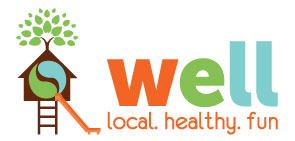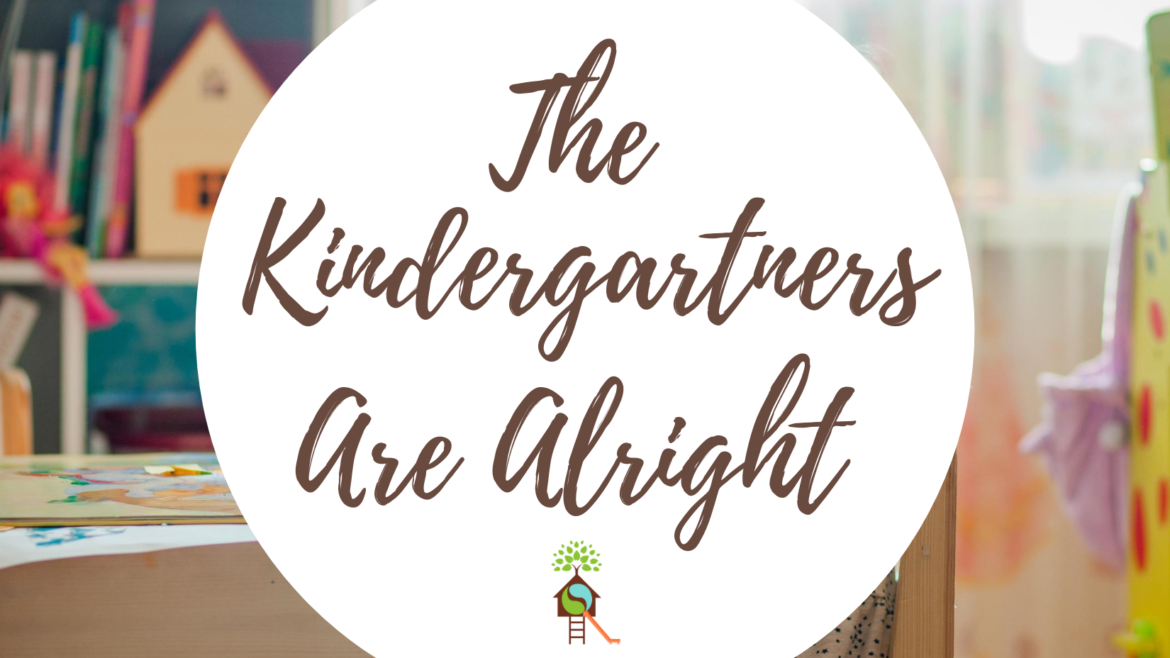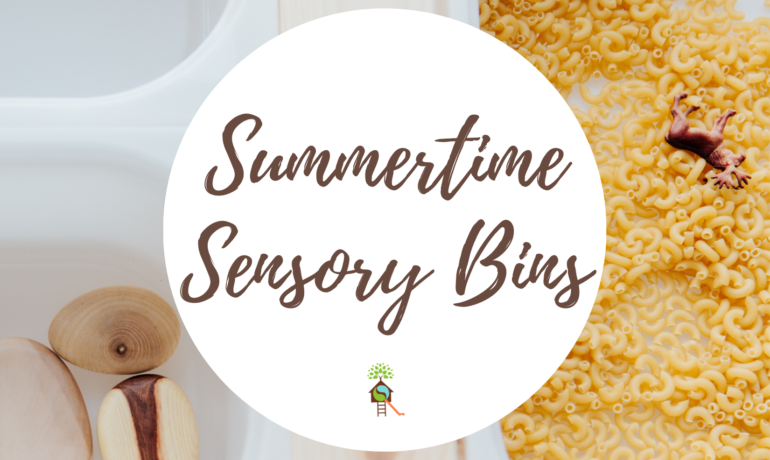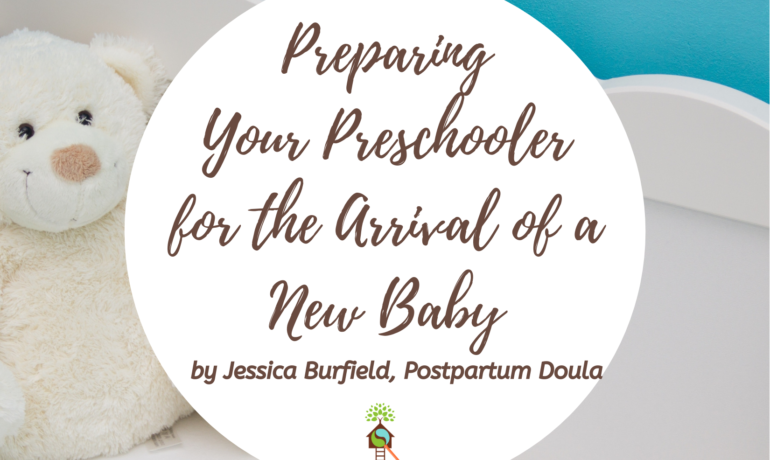Co-written by Mandy Serrano, Liz Clarke & Kim Hinkley (Programming Director at the Well)
Whether you are looking toward home schooling, in-person school, a hybrid model, or your child attending a child care with e-learning support this year, kindergarten will look different for your child from what you anticipated.
Many parents feel disappointed that the milestone of starting official school as a kindergartner has been postponed. They are worried that their child may fall behind academically and will spend too much time in front of screens and not enough socializing with peers.
We talked to two former kindergarten teachers (one of whom, Liz, is now a parent to a kindergartner herself, and the other, Mandy, now teaches dance to K-8 students) who want to assure you that although not much of what’s happening is what we consider “normal” right now, our kindergartners will be alright.
Read below for some insights from the teachers and tips on how we can ease our worries as parents and best support our children (with a little research sprinkled in).
Liz: Kids are resilient. They can bounce back much quicker than we can as adults. Kindergarten teachers build social and emotional skills into their curriculum and this will probably be a large part of school, especially when your child goes back to in-person learning. There may be some delays, but children will catch up, so we needn’t worry. I recently asked a camp counselor if she noticed a difference in the campers’ behavior after months at home. She said there has been bigger emotions, but overall kids are so excited to be back together that they are exhibiting just pure happiness!
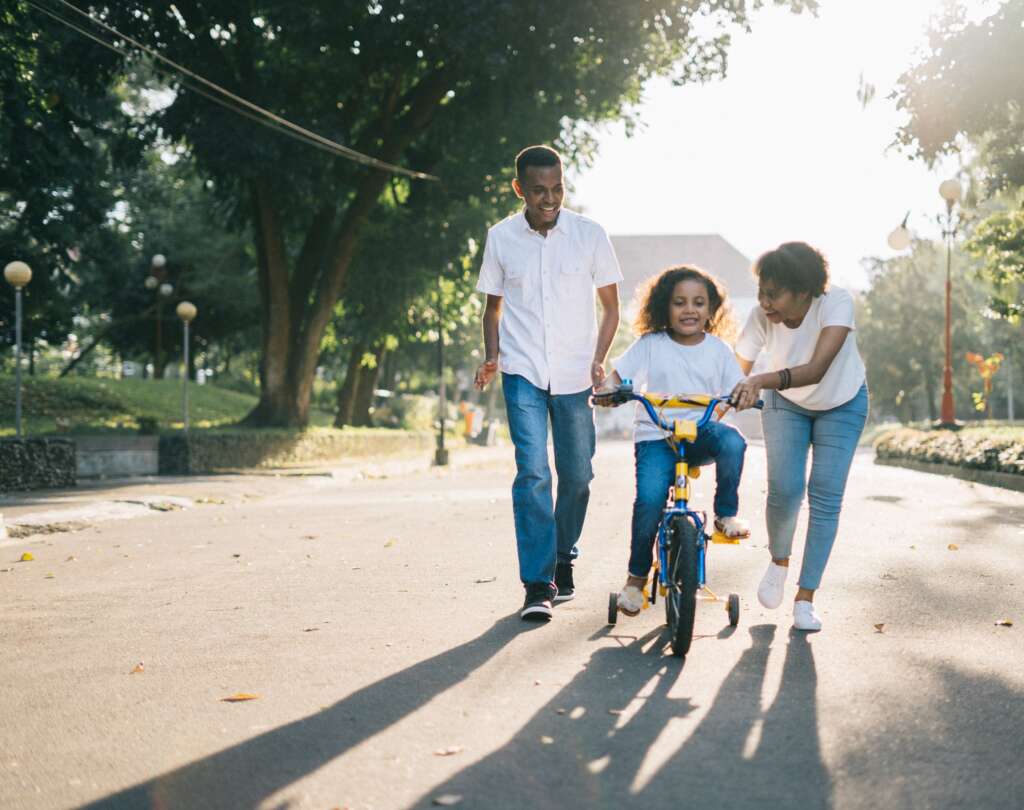
Kim: Children may have actually picked up some quality social-emotional learning while spending more time with family than they would have if schools and child care centers hadn’t shut down in the spring. Schedules are less packed, things are less rushed, and children are spending more time, overall, outdoors.
A recent article states, “Now, with an abundance of free time thrust upon kids, no place to be, no need to rush, plenty of time to make mistakes, and many parents too busy to keep them occupied at all times, Skenazy (Lenore Skenzany, president of the nonprofit Let Grow and author of Free-Range Kids: How to Raise Safe, Self-Reliant Children Without Going Nuts with Worry) says children are trying new things, helping more, discovering new interests, spending more time outside and with family, and learning in new ways.”
Academics versus Social Emotional Learning
According to the Collaborative for Academic, Social, and Emotional Learning, social emotional learning (SEL) “is the process through which children and adults acquire the knowledge, attitudes, and skills to:
- Recognize and manage their emotions
- Set and achieve positive goals
- Demonstrate caring and concern for others
- Establish and maintain positive relationships
- Make responsible decisions
- Handle interpersonal situations effectively
Why is SEL so important?
Research shows that strong social-emotional skills have these benefits for students:
- More positive attitudes toward oneself, others, and tasks including enhanced self-efficacy, confidence, persistence, empathy, connection and commitment to school, and a sense of purpose
- More positive social behaviors and relationships with peers and adults
- Reduced conduct problems and risk-taking behavior
- Decreased emotional distress
- Improved test scores, grades, and attendance
“In the long run, greater social and emotional competence can increase the likelihood of high school graduation, readiness for postsecondary education, career success, positive family and work relationships, better mental health, reduced criminal behavior, and engaged citizenship.” (Hawkins, Kosterman, Catalano, Hill, & Abbott, 2008; Jones, Greenberg, & Crowley, 2015).
Mandy: Kindergarten has changed a lot since we were students, and even just in the past ten years. We see, overall, an increased focus on academic concepts, and bigger class sizes. Most kindergartens are full-day programs as opposed to half-day. These factors were the most challenging things about my job as a teacher. I was at times encouraged by my district to teach academics over social and emotional skills, which are equally as important. So many of my students were not yet developmentally ready for these academics especially at the beginning of kindergarten. My goal was to create the best balance of academic and social emotional learning as possible.
Liz: They say kindergarten is the new college. As a former kindergarten teacher and a current kindergarten parent, the transition from preschool can seem scary. Our students are now sitting at desks, learning to read, write and maybe going to school for a longer day. I can tell you all of our kindergartners come in as preschoolers, but emotionally & mentally they are all at different levels of development! And that’s okay.
. . . take time to laugh, and don’t put too much pressure on yourselves. Despite all these new challenges, when you focus on kindness, empathy and love, you can never go wrong.
Kim: As parents and caregivers, it sounds like the best thing we can do for our children is to help continue to develop the social emotional learning that is so important as a foundation for academic learning. From a teacher’s point of view, how can we do this?
Mandy: I can suggest several things that have helped students become successful socially as well as emotionally. Children can actually have a lot of fun learning to be independent as well as team players.
Taking Turns & Waiting (aka practicing patience).
Even if your kindergartner went to an academic-focused preschool, they likely had a larger adult-to-student ratio with more time for each teacher to engage with them individually. Whatever their kindergarten class size is, they will likely have to sit semi-still a little longer during mini lessons about school procedures and safety rules in the beginning. They will have to learn to raise their hand and wait their turn. This can be very challenging for a 5-year-old who usually instantly gets a response to requests and/or questions at home.
How can you practice patience at home? Games where you take turns is a great place to start. Rolling a dice or a conversation cube works! Don’t only encourage your child to wait their turn but help them observe when you or others take turns and narrate what is going on. For example, “See how your brother is so happy he gets to go next? Oooh, he rolled a 6! I bet he is excited.”
You can also tell your child to wait a little longer for everyday things to help them flex their patience muscles. After your child asks for a snack, you can respond with: “Okay! First I have to finish loading the dishwasher and then I will help you get a snack. Would you like to help me or practice waiting?” After they do either one, praise them for how patient/helpful they are before giving them their snack.
“Reading” Books
There is a huge emphasis on reading in kindergarten. Most kindergartners cannot fully read independently, but many can pre-read independently. Pre-reading can be challenging for students with an attention span on the shorter side and/or students on the move that have difficulty sitting still. This is a great and simple learning task to practice at home. We all know reading aloud to and with your child has amazing benefits. However, in kindergarten, they will most likely be asked to “read to self” or “read to someone.” This will consist of sitting or lounging (depending on the classroom reading area) and looking at books of their choice with a buddy or by themselves. Some teachers expect silence and some whispers, or just general quiet voices. You can easily practice all three at home.
If your child doesn’t usually sit still, start with 2-3 minutes and build from there. Feel free to discuss the books afterwards. What book is your favorite? Why? What is your favorite part? Show me. This exercise not only helps with pre-reading and reading skills but also with attention span and stamina to sit and focus on one thing for a period of time. It can also be used as an alternative to “time out” if your child just needs a break and you sense a behavior shift. You can say, “I think you need a reading break to reset. Why don’t you pick out what you’d like to read.” If they are successful at “reading” on their own for a period of time that you set, an easy (and free!) reward is to then read aloud their book of choice.
Attention Spans & Working Independently
Most 5 and 6-year-olds do not have very long attention spans, nor should they! Some kindergartners have the personality for longer attention spans and some may have just had more practice. A good way to increase your child’s attention span endurance is to set them up with an activity that they would normally want your help with or your attention during. Make sure it’s something they can do on their own but they may not want to. My daughter is newly 3 and loves when I work with play dough with her but she doesn’t like to do it on her own. This would be a good example of an activity that will help her increase her attention span. I will set her up with the play dough and things she needs and say, “You play for 5 minutes and then I will come play with you.” If she protests, I set a timer. Then I gradually increase the time. I often use this tactic in kindergarten for students who struggle to work independently or finish tasks. For example, I will tell the student, “I’m going to check on that table over there. In 5 minutes I will come back and I hope you have (the focus activity) finished by then.” This may take a few tries before it sticks and you’ll have to be okay with incremental (but still noteworthy!) improvements.

Putting Things Back Where They Belong and Being Helpful
Okay, this is a big one, and will win huge brownie points with teachers once your child is physically back at school. With learning happening at home, this makes it even more personal, since you probably still want to keep your home somewhat organized!
Typically, out of 30 kids in my classroom, I had some excellent helpers when cleaning and keeping supplies organized and functioning, some average helpers, and a few kids who I could tell were never asked to do a house chore in their life (no judgement, everyone has different circumstances and I was one of the latter growing up so, sorry to my kindergarten teacher). However, one year, I had about 80% of my class who did not have a clue on how to keep track of supplies or keep them in any working condition. Karma for me I guess! That took weeks, or even months, of modeling and teaching. And even then we mostly just learned to work through the mess.
Here are some things that have worked with 30 kids and endless supplies and kept us semi-organized throughout the year:
Practice Makes, Well, Better: All humans, especially children, are creatures of habit. If students do not have frequent opportunities to practice picking up after themselves and keeping track of their items over and over and over and over and (you get where I’m going with this) they will not get in the habit of maintaining the environment and keeping track of belongings. In addition to this, expect setbacks, small improvements and possibly having to “reset.” A reset can be re-teaching the procedures for cleanup and daily routines or modifying them to better fit the child or group of children. Make clean up times fun. For example, can you finish cleaning the room together before a song you are playing ends? I do 10-minute “Pickup Parties” at home with my family and I sometimes time it with music.
Broken Record: I learned very quickly as a kindergarten teacher that I had to accept I was going to be saying the same things many times again and again every day. I don’t mind this part of the job but I know it can be exhausting for parents and caregivers! If you are up for it, this can work with all kinds of things at home, especially if done in a calm voice and manner (easier said than done, I know).
Routines, Routines, Routines: Routines and set times to clean up is a great way to keep the area livable. Assessing the environment and keeping track of personal belongings need to be built in throughout the day frequently. During learning centers I often stop after 20 minutes and take a quick pickup break. Everyone has to pick up 10 things that are not in the correct spot OR 10 things off the floor. The number of things fluctuates depending on the severity of the mess. In addition there are procedures at arrival and dismissal to ensure all student’s personal belongings are in the correct place. This cuts down on lost and misplaced items.
Markers and Play Dough: I became a kindergarten teacher long before I became a parent. Now, as the parent of a 3-year-old, I keep discovering how much easier it is to maintain arts and crafts messes with only one child and set of supplies. It’s easy to do the heavy lifting myself and let her help with the easy stuff like throwing away trash. But I am determined to teach her to close marker caps and play dough containers! It is one of the most difficult things in kindergarten. The markers end up cap-less and the play dough can lids are nowhere to be found more often than not. I get it. Kids do not want to stop their creative flow to secure a cap or lid but we lost so many markers in the process it was ridiculous. Just know it’s a universal issue in kindergarten classrooms across the world and any practice you can do at home will be greatly appreciated by teachers!
Kind Words, Gentle Hands, Walking Feet, Quiet Lips
These are phrases I learned from a fellow kindergarten and preschool teacher. They work great for your “broken record” sound bites. They don’t use the negative “no hitting, yelling, etc.” They just tell the kids what to do, not what NOT to do. For example, “I am only going to call on people raising their hand quietly,” or “I will take us to PE class when we all look ready.” This takes some pressure off you and allows the kids to take ownership of their own choices and behaviors. It also works during meltdowns. “When you’ve calmed down, I will talk to you about what you want.”
Every Child and Every Class is Different
I get tired of hearing this as a parent sometimes, but it is true. I also like to say that every parent and teacher is different. You need to do what works for you and your style and so do teachers. Teachers also need to read the room and learn what works best for the group in front of them. I never just do the same thing every year. I have to constantly adapt my teaching and methods to fit the needs of the children in my class that year. And as the kids grow and learn, they change! So I have to keep on changing with them.
Kim: I’d like to add, when something feels overwhelming for you as a parent/caregiver, or for your child, I’d encourage you be open and transparent with their teacher. Like you mentioned, every parent is different. And every household is different. Some parents might have multiple children at home who they are trying to support with distance learning, in different grades, while also trying to work full-time remotely. That could get overwhelming very quickly! Your child’s teacher also wants what’s best for your child, and they will work with you on a solution to any issues that may come up during the year.
Mandy: Hopefully the tips above can help you navigate the kindergarten year, whether it be in person, virtual or hybrid. We all have huge challenges ahead of us this year. I believe in us! We can do it!
Liz: For parents whose children are going back to in-person school, rest assured that kindergarten teachers work effortlessly to prepare your child for new routines from day one! The first two weeks, or more, are dedicated to teaching our new kindergartners how to walk into a classroom, hang up their materials and get used to being in a classroom as a kindergartner. Sure, there are tears at first, but I can assure you, those tears are gone within minutes of the day beginning. In kindergarten you are busy, your social and emotional game is ON! Parents often emailed to ask me how their child was doing emotionally at school. When a few parents picked up their child they were full of emotion. Kindergartners hold it together all day. They are navigating friendships, following routines, learning and when they arrive into the safety of their parents they let it all go. This is completely normal.
After the first two weeks or so, routines are set and now begins the academics. Students who start kindergarten knowing how to write their first name, identify their name written, count numbers to 10, and find letters A-Z are going to have a smooth transition academically. Not all kindergartners come or leave kindergarten reading, and that is very normal!
This year is going to look different. Students who are going back to in-person learning are coming back after a long break of being at home since March. Students will need to get used to being away from family when they do return to school and are instead around peers. They may even need to learn how to ask “Can I play with you?”. The great thing about kindergarten curriculum (both formal and informal) is the focus on problem-solving skills.
Kim: It might be good for parents and caregivers to do little things to make the school year fun, like still taking first day of school photos by your front door, or staging a “Picture Day” session in the fall – but let the kids dress themselves and design the backdrop!
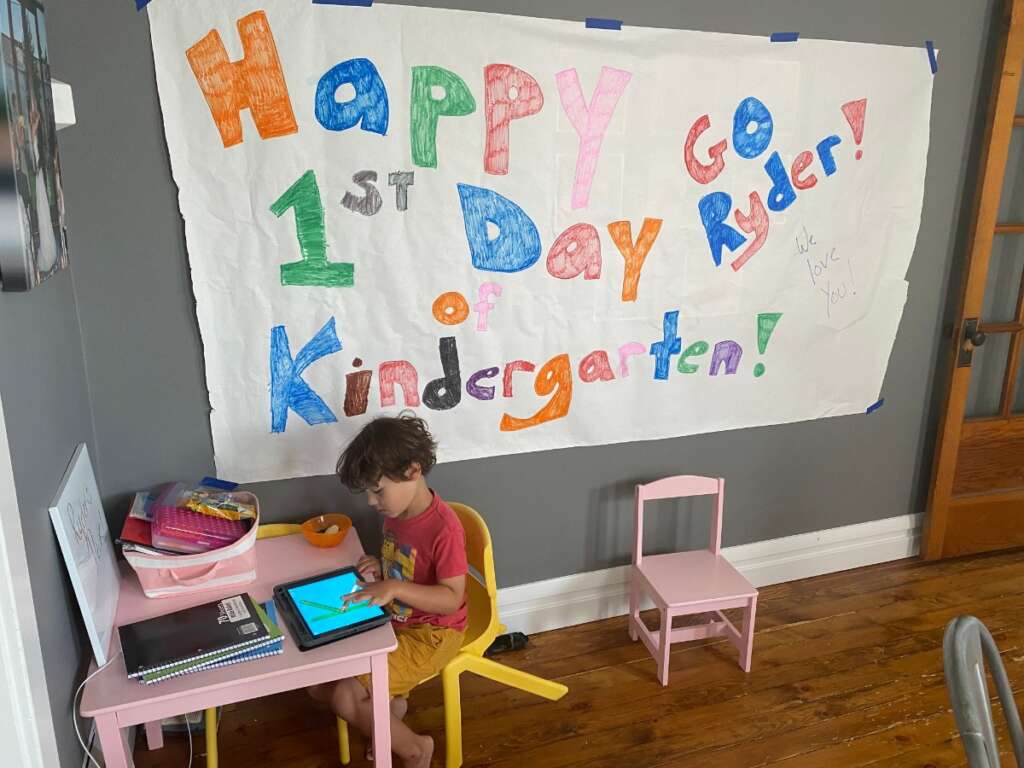
Liz: And I think we should all be prepared for a learning curve in general, for all of us. We did a good job pivoting to distance learning in the spring (even though it may not have felt like it – trust me, we did!). We will do a great job home schooling and supporting virtual learning again, or we will do a great job taking our kids to school, whatever the right choice or situation is for you and your family. And you know what? It’s not college, it’s kindergarten! So take time to laugh, and don’t put too much pressure on yourselves. Despite all these new challenges, when you focus on kindness, empathy and love, you can never go wrong.
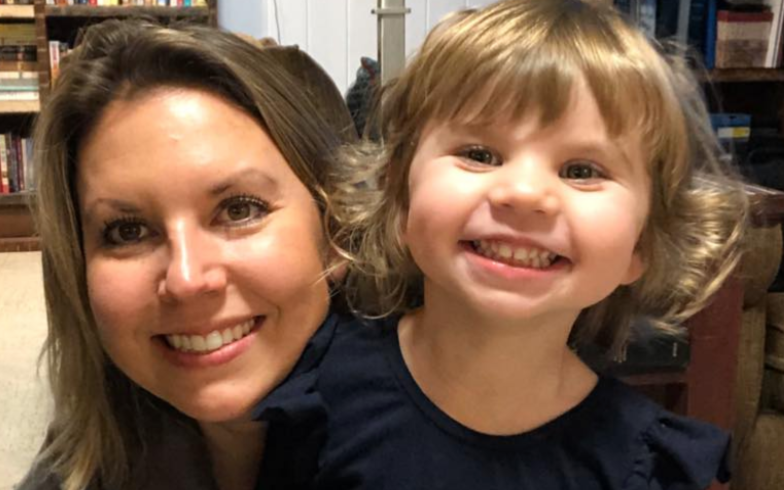
Amanda (Mandy) Serrano teaches Kindergarten through 8th graders dance at a fine arts magnet school that is part of the Chicago Public Schools district. She taught kindergarten in Chicago Public Schools for 5 years and has taught dance for 10 years. She lives with her 3-year-old daughter and husband.

Elizabeth (Liz) Clarke is a former kindergarten teacher and mom to three sons, ages 6, 4, and 9 months. Teaching has been her passion for years and she now spends her days teaching her own children at home. She has found that teaching her own kids can be more challenging than teaching 21 kindergartners! She holds a Master’s in Teaching from National Louis University and studied speech-language pathology at Northern Illinois University.
